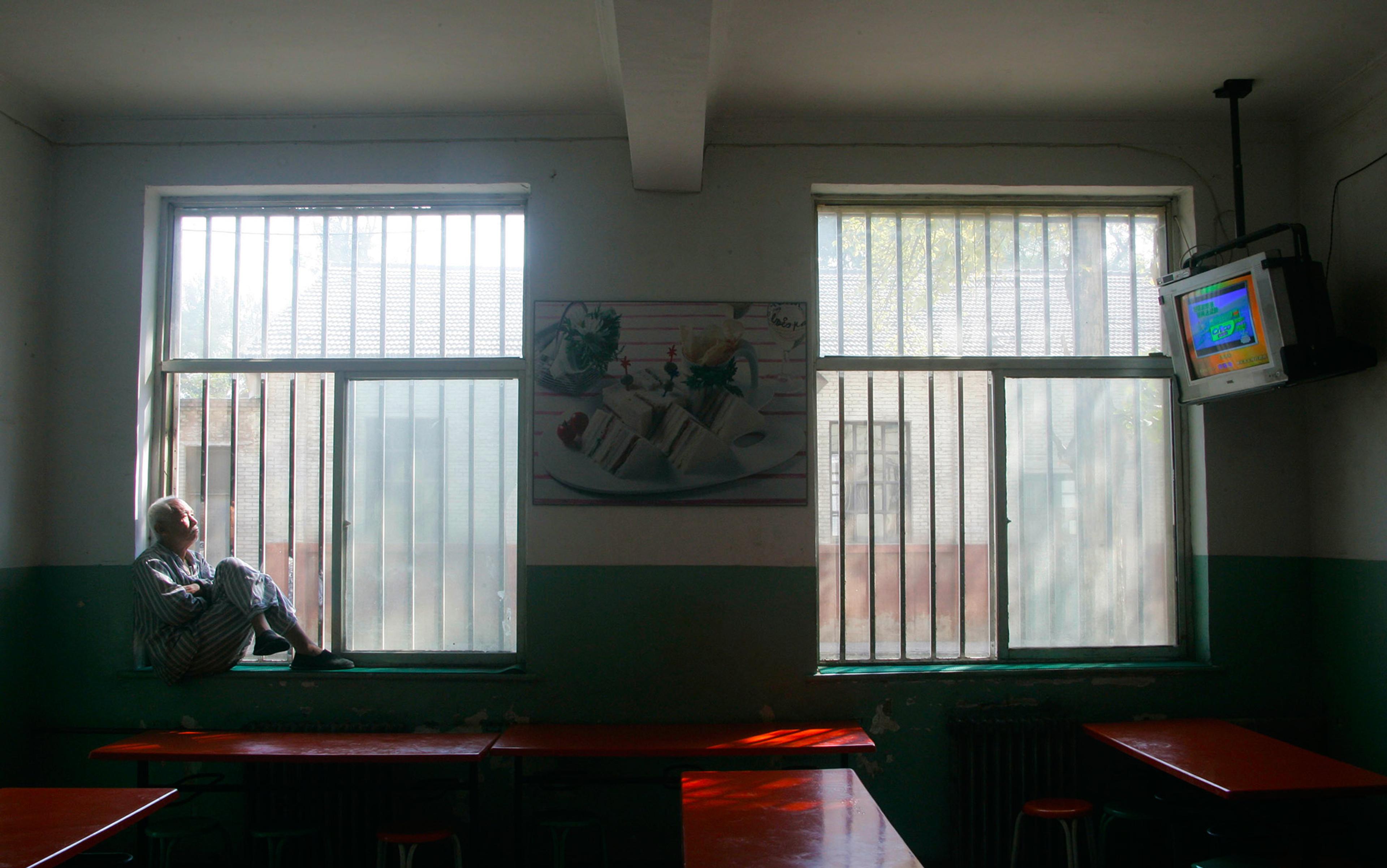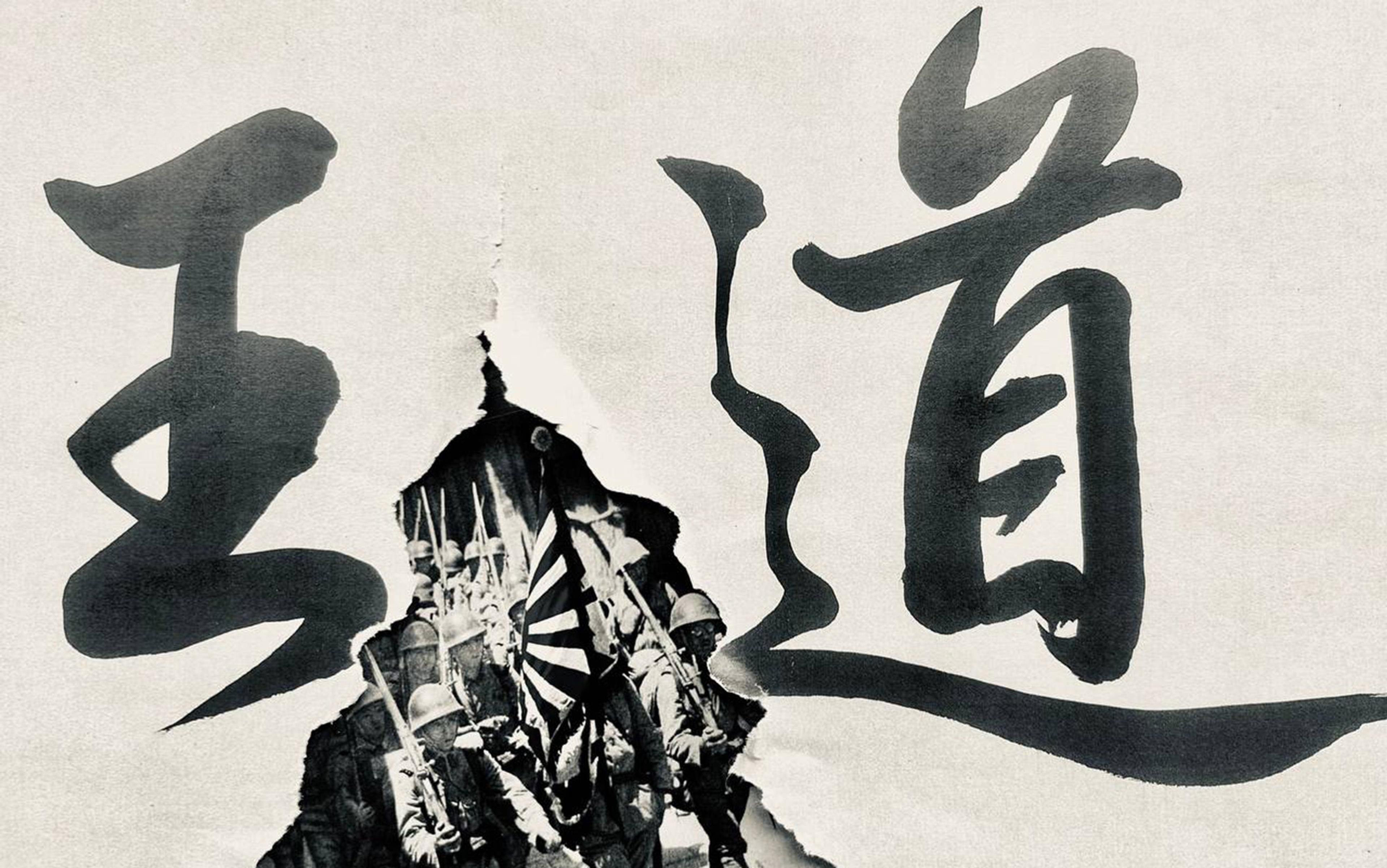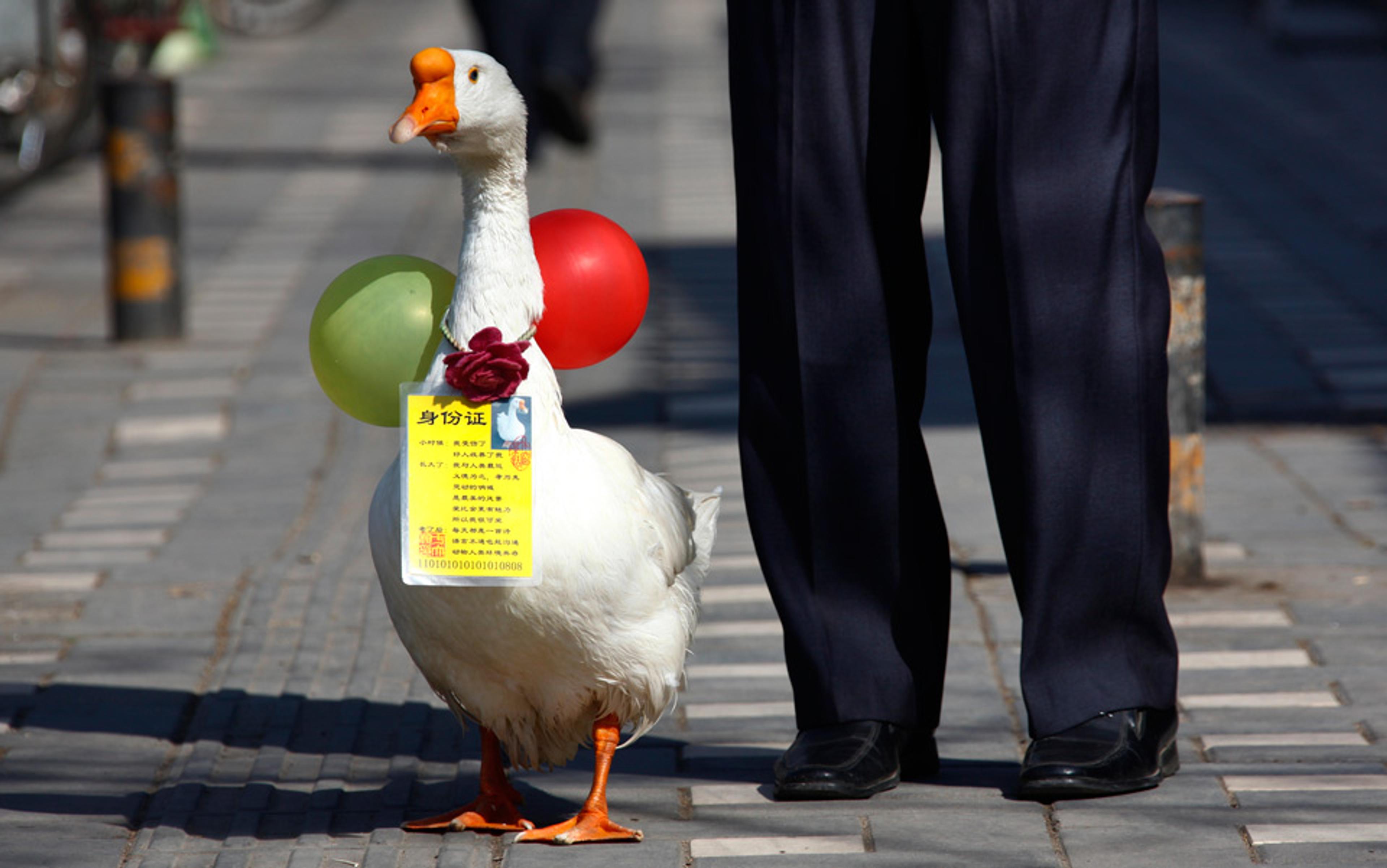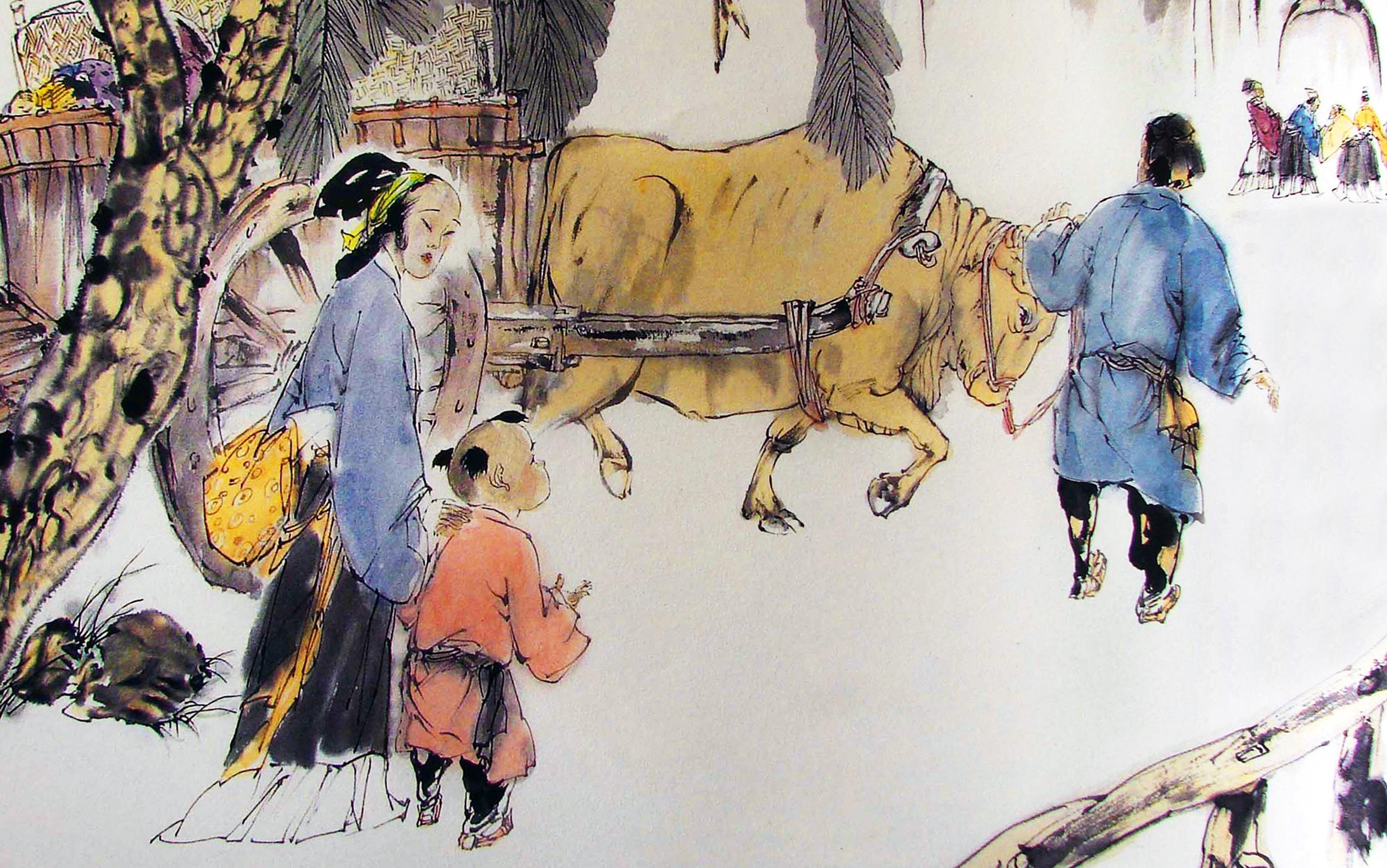In English, the term ‘mental hygiene’ likely sounds a bit stale. Having gained a brief but widespread ascendancy in the first half of the 20th century, the phrase gradually faded from popular memory and was replaced by the expression ‘mental health’ in the 1950s. In Chinese, however, mental hygiene is still alive and well. Translated as xinli weisheng or jingshen weisheng, the phrase has been a mainstay in Chinese psychiatric policy for close to a full century.
At its most basic level, mental hygiene refers to the branch of medicine that aspires to prevent psychiatric disorders. The term was first coined in the late-19th century and became commonplace by the turn of the 20th. In contrast to mental health (the expression used by the World Health Organization today), early mental hygiene consisted of a prophylactic approach to insanity through education and eugenics, rather than a holistic emphasis on self-actualisation and self-care. Mental hygienists, promising an easy fix to mental illness, gained almost universal support by the 1920s and ’30s. Yet the Second World War changed the course of their trajectory. Following the development of antipsychotic drugs and the discovery of Nazi war crimes, the discipline became both medically irrelevant and politically unpalatable.
While mental hygiene in the Western world was eventually swept under the carpet and forgotten about, its echoes have persisted in China. In 2012, the Chinese government released its long-awaited Jingshen weisheng fa, or Mental Hygiene Law. Typically translated into English as the ‘Mental Health Law’ to coincide with international conventions, the content of the document resonates with the goals of the earlier mental-hygiene movement. Though promising to protect the rights and interests of psychiatric patients, it mainly highlights the need for interventionist state policies to identify and prevent mental illnesses. Through an interlocking grid of regulatory and surveillance mechanisms, including schools, businesses and government agencies, the law proposes to mobilise social forces to solve the various dangers associated with psychiatric disorders.
If we look back in time, the continued influence of mental hygiene in China is hardly surprising. When the discipline first made its way there in the middle of the Republican period (1911-49), it coincided with an extensive interest in the concept of ‘hygiene’ more broadly. At the time, hygiene, or weisheng, had only recently entered the Chinese imaginary. Although the particular characters that constituted weisheng had long existed in the Chinese vocabulary, they were used to refer to various dietetic and meditative regimens. But in the early 20th century weisheng was imbued with more modern connotations, including scientific progress, racial fitness and state control over public health. Believing that individual and national strength were linked, successive government regimes implemented hygienic measures to both improve the health of the population and shore up political power.
Almost contemporaneously, the terms for ‘psyche’ (xinli) and ‘mind’ (jingshen) also entered the Chinese lexicon. Like weisheng, both of these phrases already existed in the Chinese language, but they diverged significantly from their modern meanings. While Confucian cosmologists had long spoken of xinli as the principles that governed the workings of the heart-mind, modern intellectuals – many of whom had studied abroad in Japan, western Europe or the United States – now used the term to refer to a Cartesian ‘psyche’. And while physicians of Chinese medicine had previously used the phrase jingshen to indicate vital life forces, scholars and translators repurposed the term to signify an immaterial ‘mind’, one that was wholly distinct from the body.
When placed in combination, xinli weisheng or jingshen weisheng – the terms used to translate mental hygiene – conveyed a sense of monumental possibility. If physicians and politicians could regulate individual bodies through public-health measures, then they could do the same for individual minds. And if psychological science could control the minds of the Chinese people, then government regimes could achieve unprecedented authority. For Chinese political leaders emerging from years of foreign imperialism, military factionalism and domestic insurrection, mental hygiene promised more than just a solution to mental illness. It also offered the key to power, stability and direct influence over a disciplined citizenry.
In 1928, Chiang Kai-shek, the head of the Nationalist Party and the leader of the Chinese nation, had grown frustrated. A few years earlier, he had launched an ambitious military venture called the Northern Expedition that aimed to reunify China from competing warlord factions that had cleaved it apart. Although the expedition was largely successful, the optimism that had accompanied the progress of the venture proved fleeting. The Chinese people persisted in sacrificing public welfare for selfish ends. Warlords continued to mount attacks against Nationalist rule. Japanese imperialists stretched their claws further into the Chinese interior. And, perhaps most troubling for Chiang, communist bandits refused to be pacified. Even after having risen to the mantle of national leader, Chiang presided over a country that was hopelessly enfeebled by ideological division and military struggle.
From Chiang’s perspective, these overlapping problems presented more insidious challenges than mere political squabbles. The divisions and discord, he believed, arose from psychological deficiencies in the mentality of the Chinese people. Dismayed at the disunity over which he presided, Chiang wrote an impassioned call for the ‘psychological reconstruction’ (xinli jianshe) of the Chinese masses. ‘Psychological reconstruction’, he claimed, was the ‘most important factor’ in the regeneration of the nation. Without it, political and economic reconstruction were ‘of little value’.
Several years before Chiang had spoken of psychological reconstruction, the revolutionary statesman Sun Yat-sen had issued a similar plea. ‘The affairs of the nation,’ he had written in 1918, ‘are a manifestation of the collective psychology. This is why the strength of the government is tied to the strength of men’s minds.’ For both Sun and Chiang, revolution and nation-building involved a fundamental transformation of the mind itself; to rebuild the nation, one had to start by transforming the individual psyche.
The plan to apply psychological concepts toward political goals was neither new nor particularly Chinese. Throughout the first half of the 20th century, the study of the mind had veered away from philosophy and toward an engagement with the experimental ethos of the social sciences. Invoking the authority of the laboratory, psychologists made radical promises about their ability to use conditioning techniques to manipulate the psyche. In Russia, the physiologist Ivan Pavlov had trained dogs to salivate at the ring of a bell. In the US, the behaviourist John B Watson claimed that he could fashion an infant into ‘any type of specialist’ he desired – from a doctor or lawyer to an artist or merchant – regardless of the child’s family background. So long as a person’s environmental conditions and ‘early training’ were sound, Watson boasted, he was no longer at the mercy of his inherited traits.
Watson’s bombast might not have been convincing to other experimental psychologists. But the potential applications – both scientific and political – of behavioural conditioning remained alluring. Particularly after the First World War had broken out, and ‘shell shock’ afflicted millions of previously mentally healthy men, Watson’s promises attracted a growing interest. While no consensus had previously been reached about the causes of mental disturbance, shell shock appeared to confirm the suspicions of the behaviourist school of thought: environmental stimuli, both good and bad, shaped the behaviours, emotions, moods and mental activities of men and women, regardless of their race or class.
They would identify stirrings of mental pathology and eradicate them before they had fully formed
The realisation brought far-reaching implications for the bourgeoning profession of experimental psychology. It also held a tantalising appeal for those outside the laboratory. If behaviour was simply the product of one’s environmental surroundings, then conditioning techniques could solve problems as wide-ranging as criminality, political dissent, even ideological nonconformity. The promises of behavioural psychology were just what Chiang was looking for when he spoke of psychological reconstruction. But he was not aware of it yet.
By the 1920s, the discovery of shell shock and the claims of behavioural conditioning joined forces with another movement sweeping the Western world: the Mental Hygiene Movement. Mental hygiene, the American psychiatrist William White explained, was the prophylactic effort by which mental illness might be cut off at its source. Rather than waiting for individuals to sink so deeply into madness that no hope could be extended for their salvation, mental hygienists instead proposed to identify the inchoate stirrings of mental pathology and eradicate them before they had fully formed. ‘The mental diseases of the public institutions,’ White declared in 1930, ‘were obviously end products of many years of bad mental hygiene.’ If, he continued, psychologists and psychiatrists could ‘[get] back to the beginnings and [correct] the difficulties at that point’, the asylums would never have been filled in the first place.
The idea seemed persuasive. The rub, however, was that nobody knew how to accomplish such a feat. How might mental hygienists determine which individuals were susceptible to the degradations of madness? And even if they could pinpoint, with some degree of certainty, the populations at risk, how could they go about ‘correcting’ the madness before it had yet begun?
In keeping with the lessons of the Great War, mental hygienists concluded that the most effective way to ward off mental breakdowns was by improving the environmental stimuli that their ‘organisms’ faced. Armed with a newfound belief in the possibilities of behavioural conditioning, psychologists descended upon schools, homes and workplaces to foster sound conditions and mitigate adverse phenomena. With the help of social workers, they could train teachers to rectify delinquent, truant and naughty behaviour; they could encourage workers to eschew alcohol, laziness and loose women; and they could warn parents not to bicker, curse and, above all, not to divorce. When environmental stimuli were wholesome, a healthy psyche was all but guaranteed. And when the individual mind was strong, so-called ‘social problems’ would eventually disappear.
The notion that mental hygienists somehow possessed the tools to correct mental – and, by extension, behavioural – deviance appealed to ambitious political leaders. In their view, mental hygiene could possibly eradicate all sorts of questionable traits and unpalatable activities – homosexuality, promiscuity, criminality, miscegenation and Marxism among them. In 1930, mental hygiene and political power were inextricably fused when the US president Herbert Hoover, a vocal champion of eugenic technology, was named honorary president of the First International Congress on Mental Hygiene. Having noted that there were at least 10 million delinquent, deficient or behaviourally defective children in the US, Hoover remained optimistic that ‘these deficiencies [could] be prevented and remedied to a high degree’. Through the radical power of the psychological sciences, the difficulties posed by the deviant and diseased would soon be ushered into the annals of problems past.
In China, Chiang had not yet heard of the burgeoning Mental Hygiene Movement. Despite his desire to strengthen the mental constitutions of the Chinese people, he was neither aware of the worldwide interest in such a goal nor had he determined how he might accomplish it. Indeed, throughout his early tenure as leader of the Nationalist Party, the appeal for psychological reconstruction in China and the bid for mental hygiene in the US had remained almost entirely distinct movements.
As it so happened, however, the 1920s saw an influx of Chinese students to the US. In the two decades between 1906 and 1926, the number of Chinese nationals studying at universities in the US grew five-fold, from a piddling 300 students at the turn of the century to a bit under 2,000 two decades later. Many of these students, enchanted by the practical applications of the social sciences, matriculated at Berkeley and Columbia where they pursued doctoral degrees in behavioural and educational psychology. Given the widespread interest in mental hygiene among psychologists in these fields, Chinese undergraduates inevitably crossed paths with some of its leading figures.
The theory behind mental hygiene proved appealing to Chinese sensibilities. From the turn of the 20th century, when Western psychological textbooks had begun making their way (via Japanese translations) to Chinese readers, the Chinese had generally looked at scientific psychology as a practical discipline. It was to them less intriguing for its philosophical insights than for its potentially transformative utility. In the same way that public health aimed to improve both bodily hygiene and racial fitness, psychology seemed to provide a method for advancing the mental strength of the Chinese citizenry. Yet despite the fact that public health had been a constituent element of state reform projects from as early as the first decade of the 20th century, the Chinese government had done little to promote the cause of mental hygiene.
By the middle of the 1930s, Chinese students returning from the US had committed to fixing the problem. Wu Nanxuan, an educational psychologist who received his PhD from Berkeley in 1929, published widely on the need to advance mental hygiene in China. Decrying his compatriots’ ‘pitiful’ lack of knowledge about the movement, Wu founded the Chinese Mental Hygiene Association in Nanjing – then the capital of China – in 1936. Several other American-educated Chinese psychologists joined Wu in this effort, including Zhang Yinian, a University of Michigan alumnus who fancied himself the ‘Clifford Beers of China’ (a nod to one of the original architects of American mental hygiene), Ai Wei, who graduated with a PhD in psychology from Columbia in 1925, and Xiao Xiaorong, who studied educational psychology at Columbia and Berkeley.
For each of these men, as well as several others, mental hygiene provided the key to a vital and prosperous modern China. Zhang emphasised this point in his treatise Xinli weisheng gailun (1936), or ‘Introduction to Mental Hygiene’. ‘The people’s hearts and minds are the basis of the nation. If the people’s minds are healthy, then the nation will necessarily be powerful and prosperous; if the people’s minds are degenerate, then the nation will necessarily be in decline.’ Recalling Chiang’s words on the exigency of ‘psychological reconstruction’, Zhang emphasised the urgent need for psychologists to spread the ‘science’ of mental hygiene nationwide. Only after they had done so, he suggested, would the entwined objectives of mental health and national strength finally be achieved.
Despite their US training, Chinese psychologists took the concept of mental hygiene in a different direction than their Western counterparts. While mental hygiene in the US remained a medical initiative – at least to a certain degree – mental hygiene in China was viewed as almost entirely political.
Anyone who failed to conform to the ideals of the Nationalist Party could be stigmatised as mentally ill
No sooner had these psychologists returned from abroad than they were co-opted into the Nationalist educational apparatus. Party leaders offered Wu a job in the Ministry of Education before appointing him president of Qinghua University in Beijing in 1931. Ai and Xiao were made chairs of the education and psychology departments at National Central University in Nanjing. In 1934, Zhang was appointed president of Hangzhou Normal University in eastern China. As leaders of these institutions, mental hygienists were expected to be responsive to Chiang’s demands. This meant, among other responsibilities, expelling communist sympathisers, eliminating liberal professors, and spreading pro-Nationalist, pro-Chiang and anticommunist propaganda to students and staff.
By early 1937, the Mental Hygiene Association had expanded to more than 230 members. Buoyed by the support they had received from the Nationalist Party, members of the association brought the message of mental hygiene to the Chinese people through radio broadcasts, print media, public lectures and educational outreach events. One broadcast put the message plainly: the problem with mental illness was that it ‘harmed social order’ and ‘jeopardised the Chinese race’. However, by bringing the disorder to the early attention of psychiatrists and psychologists, the illness could be mitigated, and the health of the nation assured.
The mental-hygiene movement in China brought clear implications. Since mental hygienists considered heterodox behaviours to be a sign of poor mental health, anyone who failed to conform to the ideals of the Nationalist Party could be stigmatised as mentally ill. And since mental hygiene was conceived as the purview of the state, madness was viewed as a primarily national concern rather than an individual one. Combining a patriotic ethos with the mandate to improve environmental stimuli, Chinese mental hygienists sought to achieve psychological wellbeing – and by extension, national strength – through the elimination of deviance and political dissent. In so doing, they moved closer to finally accomplishing the ‘psychological reconstruction’ that Chiang had so fervently spoken about as China’s leader.
The Chinese Mental Hygiene Movement had just begun to gain momentum when it was cut short by the onset of war with Japan in 1937. Although the Nationalists continued to channel funds to supporters of mental hygiene in the Chinese interior, the excitement that had so briefly captured their attentions withered away. Preoccupied with the war (and with their own survival), psychologists laid low until the conflict resolved. When it did, however, they emerged to find that mental hygiene had died an anticlimactic death alongside it. Due in part to the discovery of Nazi atrocities against the mentally ill, mental hygiene acquired an almost global disrepute.
Mental hygiene under Chiang Kai-shek never reached the breadth of influence he envisioned. But while it was slowly abandoned in other parts of the world, its legacy endured in China. The Chinese Communist Party, which rose to power in 1949, continued the practice of associating ideological nonconformity with mental illness. Particularly during the trauma of the Cultural Revolution, when asylums were emptied and political bureaus shut down, those deemed ‘mad’ were closely linked to those deemed counter-revolutionary. In more recent years, too, political dissidents have been accused of mental illness and institutionalised against their will, while in the autonomous region of Xinjiang, re-education has become the tool of choice to heal the ‘madness’ of so-called religious extremism of the largely Muslim population.
The enduring appeal of mental hygiene in China, then, can be attributed to the way it satisfies the ongoing political desire for conformity and control. Just like the Nationalists before them, the Chinese Communist Party has seen in mental hygiene a way to rehabilitate (or merely eliminate) those who have strayed from the ideal of order that modernity had promised. Therefore, the main irony of Chinese mental hygiene is that, while political psychiatry was originally aimed against supporters of communism, the communists would later become its most notorious advocates. And while mental hygiene, the world over, was originally conceived as an opportunity to improve the lives of those considered mentally ill, the vicissitudes of history turned the endeavour almost completely on its head.
The Invention of Madness: State, Society and the Insane in Modern China (2018) by Emily Baum is published via The University of Chicago Press.






